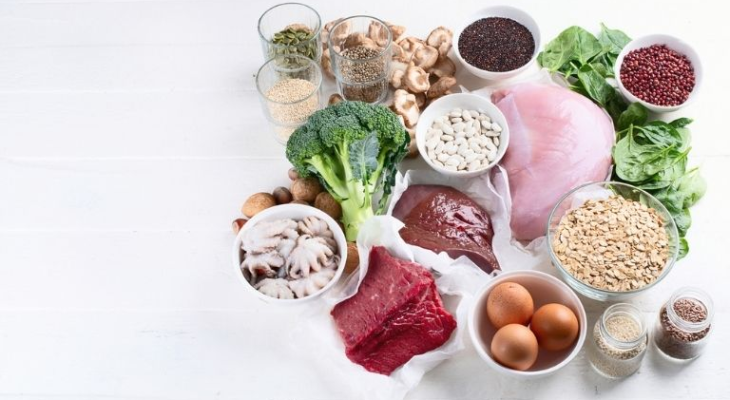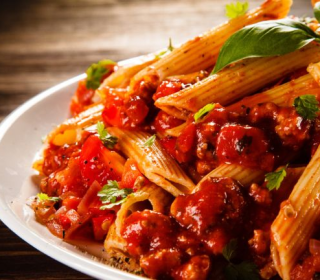All You Need to Know about Iron Deficiency: Insights from a Nutritionist

Nutritionist Rob Hobson discusses iron deficiency, and how to use food synergy in order to get enough of this mineral.
Eating smart is different from eating healthily.
Every element of nature has synergies. For example, bees depend on nectar to feed themselves. This leads to fertilization as they spread pollen from one flower to another.
Synergy is important to the human body as well. Our muscles work together, which helps us move and balance our bodies. Enzymes react with food in order to aid digestion.
Food synergy also increases the absorption rate of certain nutrients.
The bacteria in the gut work together to convert food into nutrients that are then delivered to the rest of the body.
Food synergy can also help to increase absorption of certain nutrients, such as iron. This can help prevent conditions that could harm your health.
According to a recent survey conducted by the wellbeing brand Healthspan, 33 percent of respondents felt that their diet was lacking iron. 39 percent said they were feeling this way due to not knowing what foods contain vitamins and minerals.
Rob Hobson, Nutritionist at Healthspan and Head of Nutrition, tells us everything we need about iron deficiency, and how to ensure that we get enough through the right combination of vitamins and nutrients.
What is iron?
Haemoglobin is a protein in red blood cell that carries oxygen throughout the body.
Iron is necessary for the production of healthy red blood cells. Iron is involved in immune function, energy production and DNA synthesis.
Iron is most readily absorbed from foods of animal origin. Red meat, mussels and eggs are all good sources of iron. Iron is also found in plant foods, but it is not as easily absorbed by the body.
This mineral is necessary for the healthy production of red blood cells
Fortified foods, such as breakfast cereals and beans, pulses and lentils, seeds dried fruit, dark green leafy veggies, and legumes are all plant sources.
Food synergy, a technique that combines foods to maximize the iron absorption from food is an effective way to do this.
How much iron is needed?
The daily iron requirement of women is higher, at 14.8mg. This is due to their monthly cycle.
Iron requirements for pregnant women can also be higher throughout their pregnancy, but are even more important during the third trimester because of the growing baby.
The survey found that 25% of women do not consume enough iron.
According to the latest NDNS study, 14% of adults do not consume enough iron. The survey found that women are more at risk than men of iron deficiency, with 25% of women not getting enough in their diet.
This low intake of iron is made worse by the blood loss that occurs during a woman’s period. It is more alarming to see that 49% of girls are not getting enough iron.
What are the symptoms iron deficiency?
A specific form of anaemia can be caused by iron deficiency. Symptoms include:
- Weakness and fatigue that is unusual
- Poor concentration
- Pale complexion
- Brittle nails
- Muscle soreness
- Recurrent Infections
- Feeling cold?
- Breathlessness
You should visit your GP if you suspect you are at risk. He can perform a blood test and assess your condition. Imagine your results indicate a low level of iron.
You will then be told to take Healthspan Iron Care (PS6.95 per 120 tablets), and informed of the foods that you should include more in your diet.
Who is more at risk of iron deficiency than others?
The women are at risk because of their menstrual cycle, and the increased demand during pregnancy.
Third trimester of pregnancy is when iron loss can be more rapid for women to support baby’s development. Some women can also lose more blood during labor, increasing their risk of anaemia.
Iron deficiency is more common in people who follow a strict diet, even if they are vegan.
Iron is a vital nutrient for vegans, but they must be aware of what foods to include to meet their nutritional requirements.
Female athletes are a group at high risk of iron deficiency. This can be with or without anaemia. The iron status of female athletes can be caused by a variety of factors including diet, menstruation and increased iron loss due to haemolysis.
Iron deficiency may be more common in people who follow a strict diet
The female athlete triad, which includes younger female athletes, is also more likely to be at risk for iron deficiency.
It is more common among young female athletes who participate in endurance sports such as triathlon, long-distance running and swimming.
This group is characterized by three key symptoms:
- Low energy levels with or without disordered food
- Menstrual dysfunction
- Low bone mineral density
This group is often afflicted with iron deficiency, which can lead to poor health or performance.
According to a study in the journal Nutrients, iron deficiency can also affect vitamin D status.
This study focused on female athletes. It found that women with low vitamin D levels were more likely to have iron deficiencies (75%) compared with those who had normal iron status (48%)
Iron deficiency has a greater impact on vitamin D levels in healthy, active females.
More research is required to understand their mutual dependency.

How can food synergy be used to help people get enough iron?
Iron intake is a concern for many people. The best way to increase iron intake is by eating more iron-rich food. A supplement can help you if you’re low on iron.
The NDNS survey results are based on food intake, but do not take into account iron absorption from foods.
Food synergy is also important for anyone who wants to increase iron levels.
Iron from plants can be combined with vitamin C
Vitamin C aids the body in absorbing iron from plant-based foods more effectively. Drinking orange juice along with fortified cereal is the easiest way to get vitamin C.
Add some chopped berries to your yoghurt if you like it with granola. Include plenty of green vegetables in your tofu curry or stir-fry. They are not only rich in vitamin C, but also iron.

Copper-rich foods can be combined with iron
Copper is found in dark chocolate, seeds, chickpeas and cashews.
Iron-rich foods can be easily combined with these foods. In vegetarian dishes like curries and tagines, chickpeas, lentils, and leafy greens are all good options.
You can also add nuts and dried fruits to your cereal.
Beware of negative synergies between food
It is important to remember that food synergy in iron can work the other way around. This is especially true if you want to boost your levels.
Avoid drinking tea at meals as the tannins in tea can prevent iron absorption.
Some supplements can also be incompatible, such as iron and calcium.
Compounds known as phytates may also interfere with iron absorption. They are present in wholemeal and beans, both of which are iron-rich foods. It is beneficial to soak beans, lentils and pulses before cooking them. This will help reduce the effects of phytates.
Some supplements can also interact with each other, such as iron and calcium. Although this interaction is not definitively proven, it’s prudent to take iron and calcium at different times.









